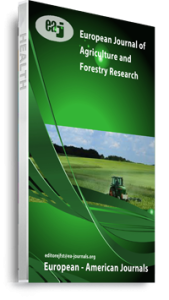Improved agricultural production requires balanced nutrients. In spite of Bayelsa State’s intention to increase its’ agricultural base, little or no information is available on the soils micronutrient status. This study evaluated the status and distribution of Fe, Mn, Zn and Cu in some communities earmarked for agricultural intensification. Sample collection was guided by horizon differentiation. Micronutrients distribution variation was evaluated using coefficient of variation. Iron concentration varied from 41-91 mg/kg in Elemebiri (ELM) soils with moderate %CV (16, 17 and 28 for ELM1, ELM2 and ELM3) and 34-92 mg/kg in Trofani (TFN) soils with moderate to high %CV (30, 20 and 33 for TFN1, TFN2 and TFN3), respectively. The Mn values varied from 1.3 – 4.25 mg/kg for Elemebiri soils and 0.34 – 3.8 mg/kg for Trofani soils. The %CV of Mn was high as ELM1, ELM2 and ELM3 recorded 36, 31 and 38 %CV and TFN1, TFN2 and TFN3 87, 56 and 63, respectively. Available Zn varied between 3.48 – 16.56 mg/kg and 0.87 – 18.56 mg/kg in the Elemebiri and Trofani soils, respectively. The %CV for Zn was 32, 26, and 53 for ELM1, ELM2 and ELM3 and 41, 24 and 56 for TFN1, TFN2 and TFN3, respectively. Copper concentration varied between 1.24 – 5.3 mg/kg for Elemebiri soils and 0.75 – 5.7 mg/kg for Trofani soils. The %CV for Cu was 28, 33 and 25 for ELM1, ELM2 and ELM3 and 36, 53 and 43 for TFN1, TFN2 and TFN3, respectively. Though micronutrient status of the soils looks promising, there is need for close monitoring.
Keywords: Bayelsa State, Food Security, agricultural intensification, micronutrient status

